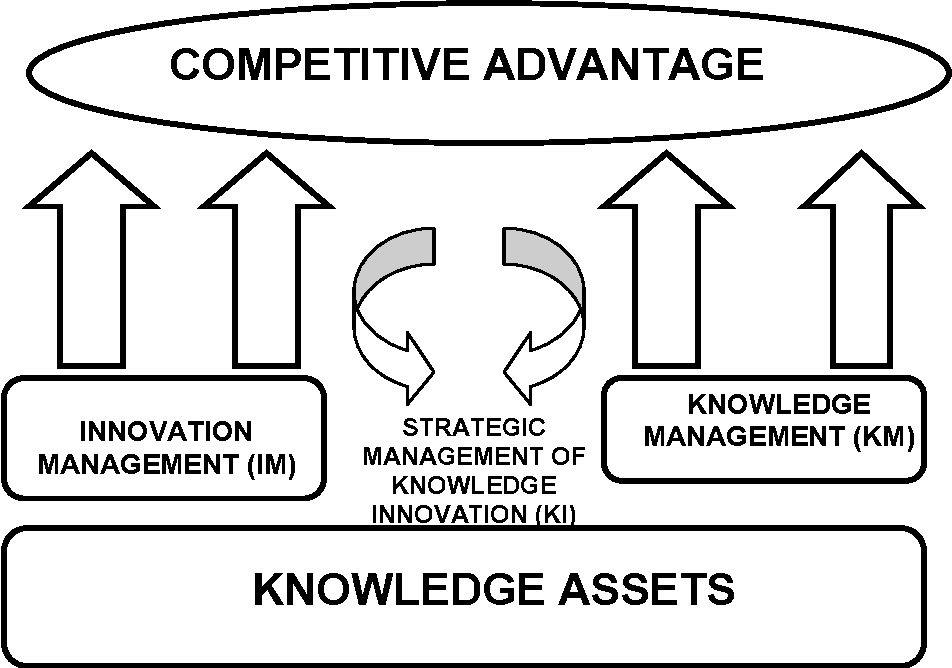Innovation: Meaning & Types | CMAT Mock Test Series - CAT PDF Download
Definition of Innovation – What is innovation?
Innovation is the process of generating, refining, and implementing fresh concepts, techniques, or products that result in substantial positive transformations.
- It involves identifying and surmounting unaddressed needs or obstacles through imaginative thinking and departing from conventional methods.

- Innovation manifests in diverse domains like technology, commerce, science, and the arts, frequently enhancing efficiency, output, or value generation.
- Crucial elements of innovation encompass originality, feasibility, and influence, demanding a readiness to take risks and embrace change.
- Successful innovation not only resolves current issues but often foresees future requirements and trends, propelling advancements and nurturing progress in a swiftly changing environment.
8 Fields of Innovation
- Product & Product Performance Innovation: This type of innovation involves either creating a new product or enhancing the performance of an existing product. In the business realm, it is a common practice to introduce new products or improve the features of existing ones to meet changing consumer needs. For instance, the introduction of smartphones with advanced features such as facial recognition and augmented reality represents product performance innovation.

- Technology Innovation: Technological innovation refers to the development of new technologies that can serve as the foundation for various other innovations. A classic example is the Internet, which not only revolutionized communication but also paved the way for innovations in e-commerce, social media, and online streaming services. The continuous evolution of artificial intelligence and machine learning is another instance of technology innovation driving progress in multiple fields.

- Business Model Innovation: Businesses often achieve significant success by innovating their business models. This entails exploring new channels, leveraging emerging technologies, and tapping into unexplored markets to create innovative ways of delivering value to customers. Digital ecosystems, such as online marketplaces that connect buyers and sellers worldwide, exemplify how innovative business models can redefine traditional industries and open up new revenue streams.
- Organizational Innovation: Organizational innovation involves reimagining how resources and assets are managed and shared within a company. By adopting novel approaches to resource allocation and collaboration, organizations can optimize their operations and achieve greater efficiency. For example, implementing a flexible work-from-home policy or transitioning to a cloud-based project management system can drive organizational innovation by enhancing productivity and employee satisfaction.

- Process Innovation: Innovation in processes leads to enhanced efficiency or effectiveness in existing methods. This can involve improvements in production, delivery, or customer interaction.
- Marketing / Sales - New Channel Innovation: Introducing novel ways to attract and retain customer attention is crucial. This innovation can manifest through creative marketing/sales strategies or exploring new channels for customer outreach and sales.

- Network Innovation: By linking diverse groups and stakeholders, additional value can be generated. This form of innovation is prevalent, especially with the widespread usage of ICT services.
- Customer Engagement / Retention: Implementing innovative concepts to boost customer engagement and retention is vital. The aim is to introduce inventive models that maintain customer loyalty and engagement levels.

The 4 Types of Innovation
First, it's essential to grasp that innovation can impact products, services, and processes in different ways. Typically, we categorize innovation into four levels based on whether they open new markets or when technology undergoes significant changes.
The four distinct types of innovation are:
- Incremental Innovation
- Architectural Innovation
- Disruptive Innovation
- Radical Innovation

1. Incremental Innovation
This type of innovation involves utilizing existing technology within an existing market. It aims to enhance existing offerings by introducing new features or making changes to the design.
Example: A prime illustration of incremental innovation is observed in the Smartphone industry, where innovations primarily focus on hardware upgrades, design enhancements, and the addition of new features like cameras and sensors.
2. Disruptive Innovation
Disruptive innovation entails applying new technologies, processes, or business models to established industries. While these new approaches may initially seem inferior to existing solutions, they eventually outperform them due to efficiency or effectiveness advantages.
- Definition: Disruptive innovation refers to the process where new technologies or business models fundamentally alter the way products or services are perceived, used, and delivered in an existing market.
- Examples:
- Amazon revolutionized the book industry by leveraging Internet technologies to change how books were sold, delivered, and experienced.
- The iPhone transformed the mobile phone market by introducing touch-interface-centered devices with intuitive user interfaces, replacing phones with buttons and keypads.
3. Architectural Innovation
- Definition: Architectural innovation involves utilizing existing domain expertise, technology, and skills from one market and applying them to a different market to open up new opportunities and expand the customer base.
- Examples:
- Companies like Amazon and Alibaba leverage their digital ecosystem capabilities to enter new markets by offering new services and products using their existing customer base and expertise in building platforms.
- Amazon's foray into the medical care field demonstrates their strategic use of architectural innovation to diversify their market presence.
4. Radical Innovation
- Definition: Radical innovation involves the creation of entirely new technologies, services, and business models that disrupt existing markets and open up novel market opportunities.
- Examples:
- Radical innovation is considered the rarest form of innovation as it entails pioneering advancements that lead to the development of new markets.
What are the 5 stages of corporate innovation?

- Ideation & Idea Generation: This initial stage involves brainstorming and seeking innovative ways to enhance your business, products, or services. Ideas can stem from various sources such as customer feedback, emerging technologies, or shifts in the economy.
- Evaluation: It is crucial to evaluate ideas meticulously before proceeding. By assessing each concept thoroughly, you can avoid investing in unfeasible or unprofitable projects, ensuring resources are allocated wisely.
- Testing, Experimenting and MVP: Testing, experimenting, and Minimum Viable Product (MVP) evaluation are crucial phases in the innovation process. This stage involves practical assessment of an idea through prototype development, market trials, and user input. However, before diving into full-scale development, it's prudent to start with small-scale MVPs to mitigate risks associated with unviable or unprofitable projects. MVPs offer a cost-effective means to validate ideas without extensive time or financial commitments.
- Development and Implementation: Successful testing provides valuable initial feedback essential for devising a comprehensive plan and executing full-scale innovation development. Post a successful test phase, it is imperative to leverage feedback to construct a detailed development roadmap encompassing all necessary steps for market entry. Once the roadmap is finalized, the focus shifts to executing the plan and bringing the innovation to fruition, encompassing aspects like Marketing, Sales, and Support.
- Optimization & Scaling: Following the launch of an innovation, continuous performance monitoring and optimization become pivotal. This stage emphasizes ensuring the sustained success and viability of the innovation over the long run. It involves ongoing monitoring, analysis, and enhancement efforts. Once the innovation establishes itself and demonstrates favorable performance, the next phase involves scaling it up to reach a broader customer base.
How to Encourage Innovation in Your Business
Innovation is a critical aspect for the survival of businesses and industries. Inspiring employees to generate new ideas can be challenging. Here are strategies to foster innovation:

- Actively encourage your employees: Encourage your employees to share their ideas and suggestions freely.
- Ask customers for feedback: Engage with customers to gather insights and improve your products/services based on their feedback.
- Ask stakeholders for feedback: Involve stakeholders in the decision-making process to gain different perspectives.
- Invest in your employees' education: Support continuous learning and skill development among your workforce.
- Allocate resources for Research and Development (R&D): Dedicate resources to explore new technologies and develop innovative solutions.
- Establish a reward system for innovative thinking: Recognize and reward employees who contribute valuable and creative ideas.
- Collaborate with start-ups and innovative companies: Partner with external organizations to exchange ideas and stay updated on industry trends.
- Implement an intrapreneurship program: Foster an entrepreneurial spirit within your organization to encourage employees to take initiative.
- Conduct active research online: Stay informed about industry news, emerging technologies, and market trends to inspire innovation.
- Engage with experts: Seek advice and insights from industry experts to gain valuable knowledge and perspectives.
Innovation involves calculated risks and requires effective management. Not all projects will succeed, so it's essential to have processes in place to mitigate potential failures. Consider developing a custom innovation program incorporating the above strategies to streamline the process and enhance oversight.
Measuring innovation: A challenging task
Innovation measurement poses a significant challenge for many businesses, often hindering the innovation process. While certain aspects of innovation, like the number of new patents or revenue from fresh products, are quantifiable, the essence of innovation itself remains elusive.

- The multifaceted nature of innovation: Innovation encompasses more than just tangible outcomes. It includes intangible elements such as cultural shifts, knowledge expansion, the journey towards increased innovation, and the enhancement of creative problem-solving skills within an organization.
- The iterative essence of innovation: Innovation is not a linear process but rather an iterative one characterized by numerous trials, errors, and the gradual evolution of ideas. It involves continual experimentation, learning from failures, and the ongoing refinement and adaptation of concepts.
- The pitfalls of rigid KPIs in innovation: Imposing strict Key Performance Indicators (KPIs) or success metrics on innovation can be detrimental for organizations. Such rigid metrics often result in a myopic focus on short-term gains and superficial innovations, neglecting long-term transformative changes.

- Impact on creativity and risk-taking: Inaccurate measurement of innovation can stifle creativity within a company. Incorrect metrics may discourage risk-taking behaviors among employees, pushing them towards safe, conventional approaches to meet predefined goals.
The Significance of Failure in Driving Innovation
Failure is often viewed negatively, but it plays a crucial role in fostering innovation. Companies should not aim for failure, but they should acknowledge that each failure provides valuable insights for future endeavors. Thomas Edison famously stated, "I have not failed. I have only found 10,000 ways that have not worked."
Edison's invention of the light bulb was not a singular stroke of brilliance; rather, it resulted from continuous experimentation and learning from errors. If a Key Performance Indicator (KPI) had been set, success might have been achieved after just 100 experiments.
Cultivating a Culture that Embraces Failure
- It is insufficient to merely accept failures; organizations must foster a culture that not only tolerates failure but actively promotes it. This involves transforming failure from a setback into a learning opportunity.
- Creating an environment where employees feel encouraged to take risks and make mistakes is essential. When mistakes occur, they should be viewed as opportunities for growth and improvement.
Documentation and Learning from Failures

- Every failure, experiment, and lesson learned should be carefully documented and shared. Merely experiencing failure is not enough; it is crucial to derive insights from it.
- Actively managing failures, recording tested hypotheses, and documenting lessons learned can help prevent recurring mistakes and expedite the learning process.
Leveraging Knowledge Management for Innovation

- Effective knowledge management can enhance an organization's ability to generate ideas, conduct experiments, and implement innovations successfully.
- Establishing a culture of continuous learning, supported by appropriate tools, methodologies, and processes, can enhance an organization's innovation capabilities and position it for sustained success, providing a competitive edge.
Protection of Innovations
Legal Protection
- Legal protection is one of the primary methods to safeguard your innovation. This involves strategies such as patenting inventions to both capitalize on them and prevent unauthorized use by others. It is crucial to consider the expenses related to patent protection. While the initial costs may be manageable, the expenses for legal actions against potential patent infringements can rise significantly, posing challenges for smaller businesses.
- It's essential to recognize that not all aspects of innovation can be patented. While products, processes, and technologies are commonly eligible for protection, it is often difficult, if not impossible, to secure patents for software or business models.
First-Mover Advantage
- The concept of the first-mover advantage is frequently leveraged by companies, particularly in the software industry. This strategy involves being the first to introduce a new process, business model, or product to the market, enabling the company to capture a significant market share while competitors are still developing their offerings.
- By gaining this early lead, the first-mover can continuously enhance their product, establishing a competitive edge by delivering a superior product or service more swiftly than their rivals.
|
19 videos|59 docs|26 tests
|
FAQs on Innovation: Meaning & Types - CMAT Mock Test Series - CAT
| 1. What is the definition of innovation? |  |
| 2. What are the 8 fields of innovation? |  |
| 3. What are the 4 types of innovation? |  |
| 4. What are the 5 stages of corporate innovation? |  |
| 5. Why is measuring innovation considered a challenging task? |  |
















